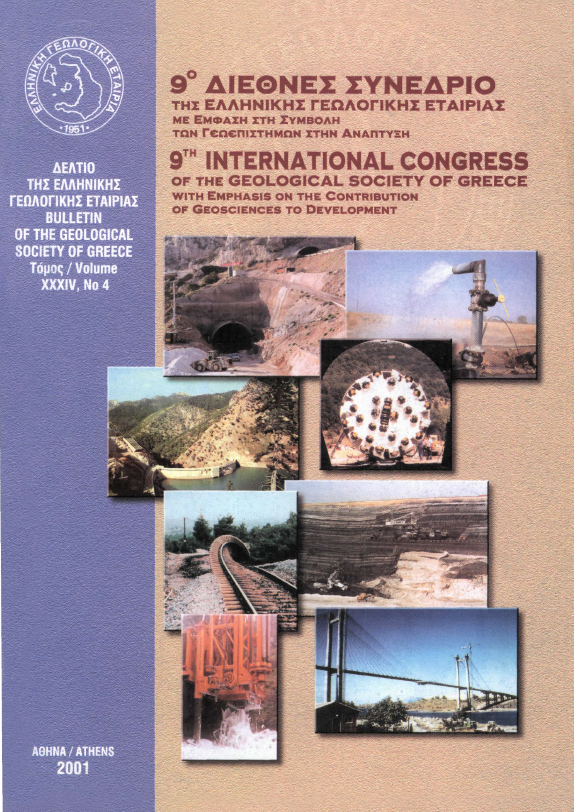A comparative study for structural bedrock delineation by using conventional geophysical methods

Abstract
In this paper is examined the potential and effectiveness of two conventional geophysical methods in geotechnical research. The seismic refraction method that has been successfully used in the past for subsurface bedrock delineation in foundation projects, failed to indicate clear distinction between flysch and limestone bedrock material in the area under investigation. This failure is due to the macro-anisotropy structure of the limestone that resulted from joints, tectonic processes or/and karstic phenomena and later fillings of the voids with argillaceous material. The geoelectrical method of vertical sounding, on the other hand, although provided a clear distinction for the bedrock characterization, failed to distinguish the overburden cover from the underlain flysch formation. Finally, in this paper it is shown that for a successful application of geophysical work in geotechnical research, it is required effective design, utilization of modern analysis methods and handling more than geophysical methods.
Article Details
- How to Cite
-
ΠΑΠΑΔΟΠΟΥΛΟΣ Τ. Δ., ΑΛΕΞΟΠΟΥΛΟΣ I. A., & ΚΑΜΠΟΥΡΗΣ Π. Ι. (2001). A comparative study for structural bedrock delineation by using conventional geophysical methods. Bulletin of the Geological Society of Greece, 34(4), 1301–1307. https://doi.org/10.12681/bgsg.17217
- Section
- Geophysics

This work is licensed under a Creative Commons Attribution-NonCommercial 4.0 International License.
Authors who publish with this journal agree to the following terms:
Authors retain copyright and grant the journal right of first publication with the work simultaneously licensed under a Creative Commons Attribution Non-Commercial License that allows others to share the work with an acknowledgement of the work's authorship and initial publication in this journal.
Authors are able to enter into separate, additional contractual arrangements for the non-exclusive distribution of the journal's published version of the work (e.g. post it to an institutional repository or publish it in a book), with an acknowledgement of its initial publication in this journal. Authors are permitted and encouraged to post their work online (preferably in institutional repositories or on their website) prior to and during the submission process, as it can lead to productive exchanges, as well as earlier and greater citation of published work.


